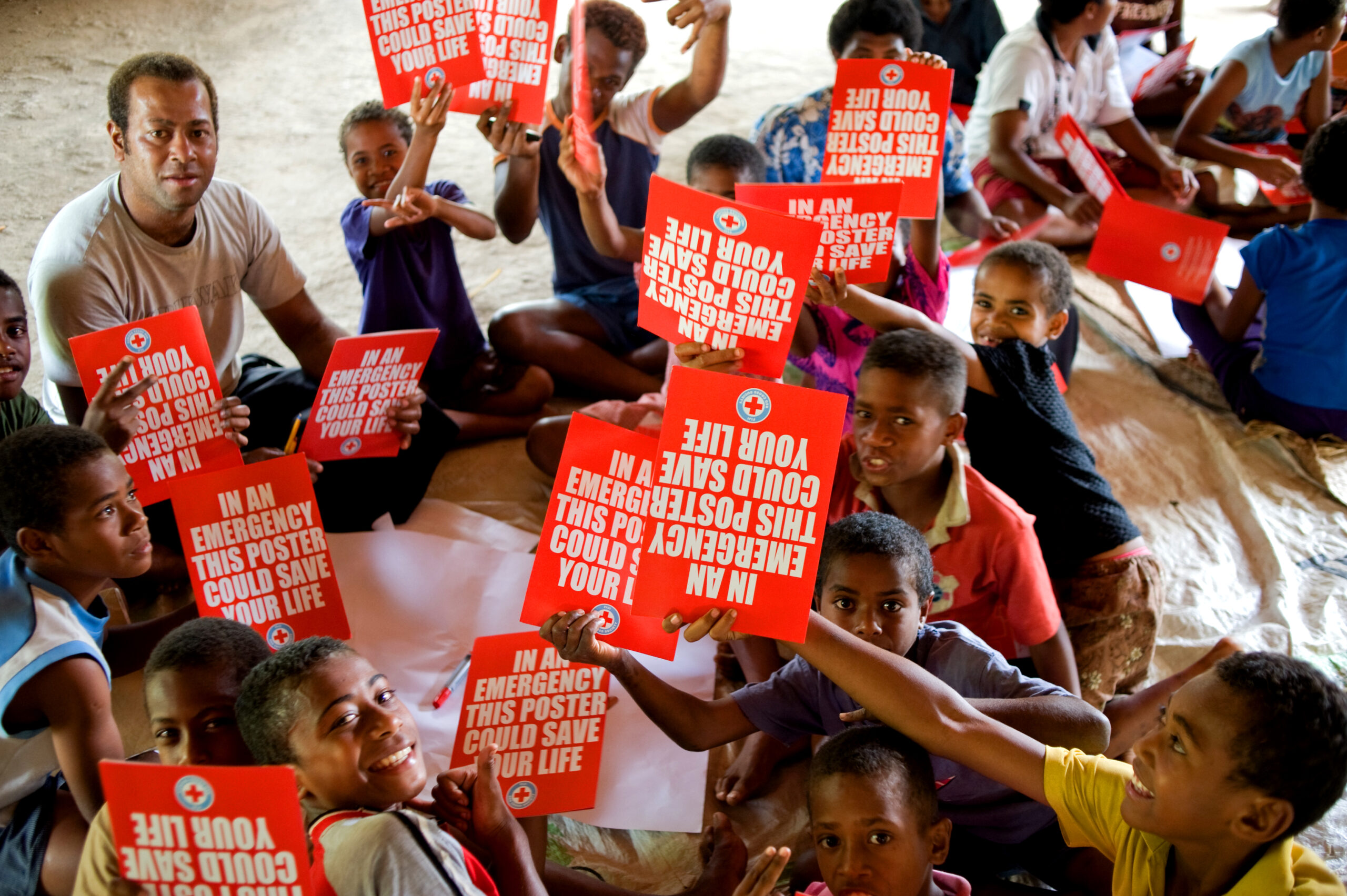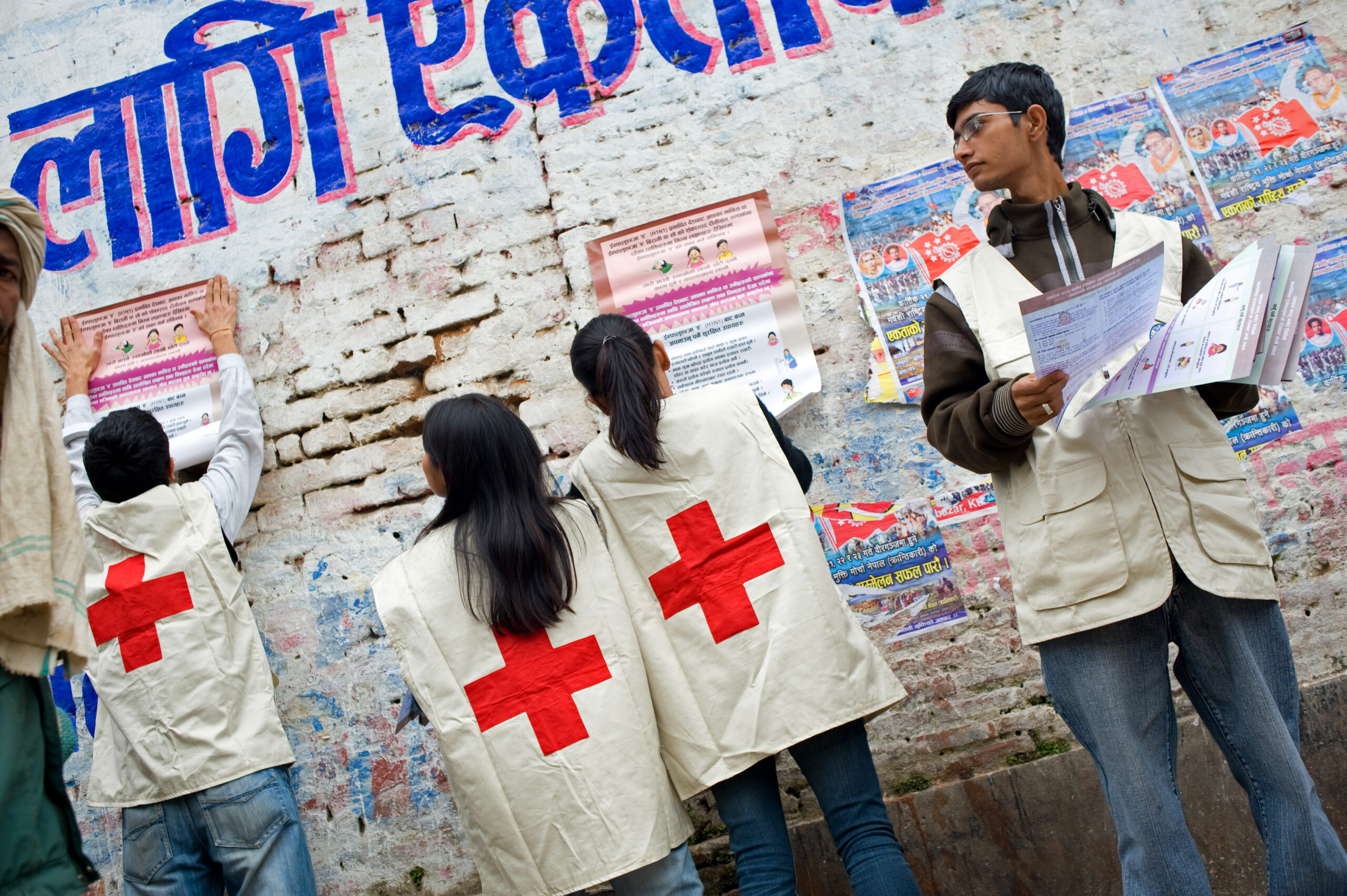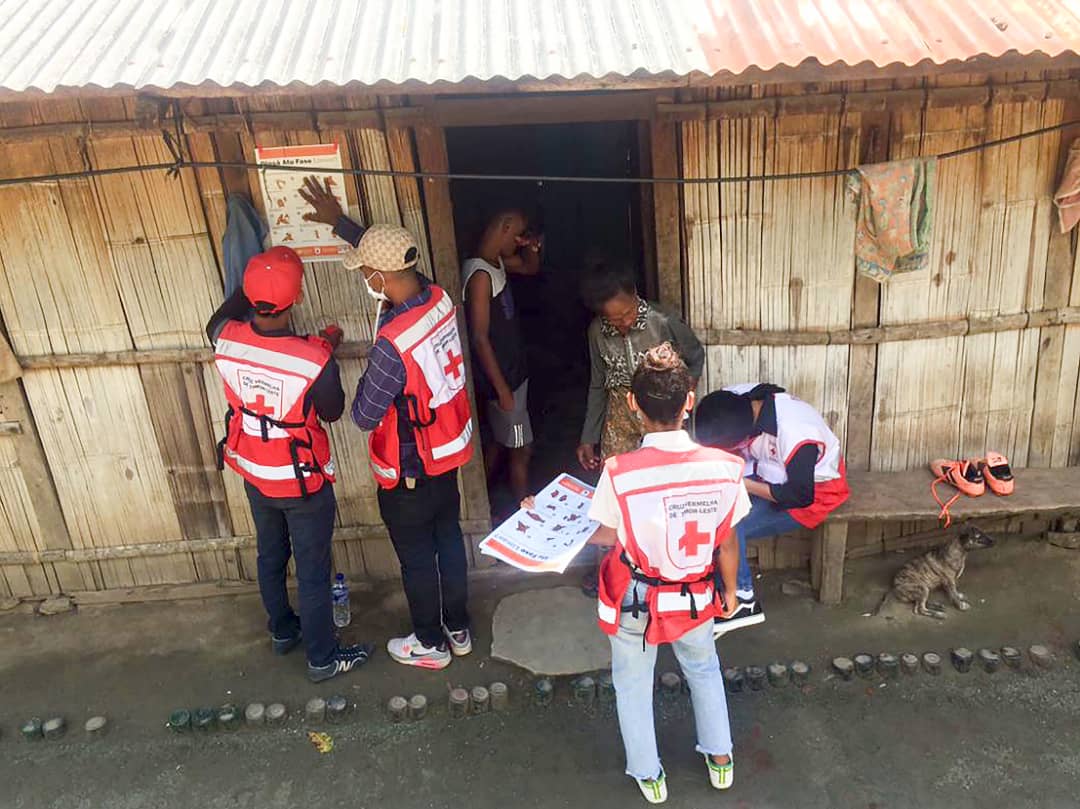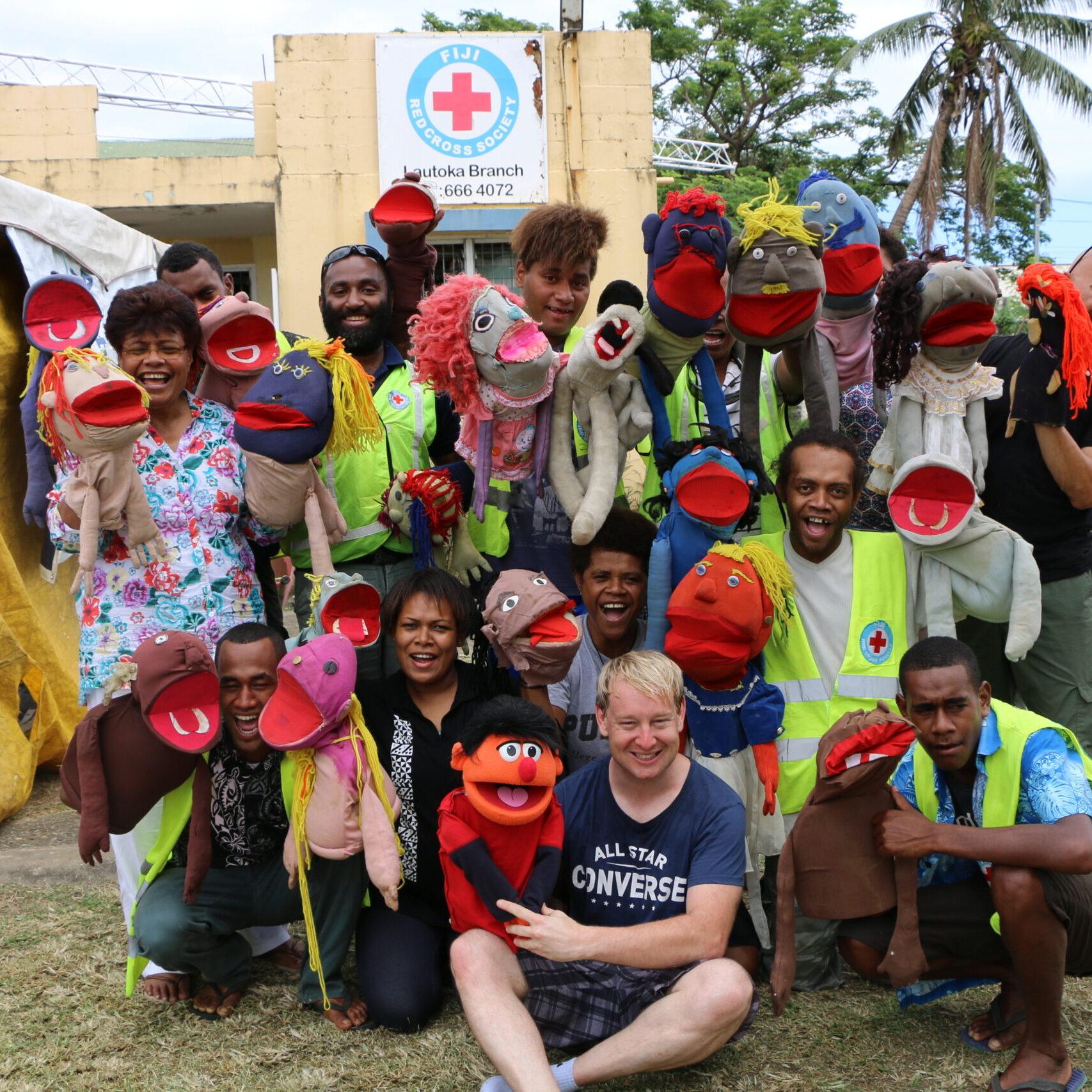Public Awareness and Public Education
Comprehensive disaster risk knowledge empowers communities to effectively prepare for, mitigate, and respond to potential shocks and hazards. To help build this critical knowledge, the IFRC and Save the Children have developed Public Awareness and Public Education (PAPE) key messages for disaster risk reduction. By promoting evidence-based, clear, and consistent risk and safety messaging, PAPE seeks to turn available human knowledge into specific action to reduce disaster risks.

What is PAPE and why it matters?
In times of crisis and disaster, information shared in a timely and understandable manner by trusted sources enables communities to stay safe and save lives. However, hazard awareness alone does not drive risk-reducing actions. Research shows that people act when they understand specific preparedness steps, believe in their effectiveness, and are confident they can complete them.
Building on decades of research and experience, the IFRC and Save the Children developed Public Awareness and Public Education (PAPE) messages that provide communities evidence-based, concise and actionable information to reduce hazard risks and improve response capacities.
The PAPE offers practical advice on effective risk communication for public education. It includes foundational, all-hazard messaging to enhance overall household preparedness. Additionally, it provides hazard-specific guidelines tailored to mitigating and responding to distinct threats. The more households plan ahead, reduce risks through structural and non-structural measures, hone response skills and stock provisions, the greater their resilience.
Public Awareness And Public Education For Disaster Risk Reduction: Key Messages
This updated publication provides practical advice and guidance about disaster risk reduction messages and information to share with the public.
Who can use PAPE and how?
The PAPE key messages can be used by any organization or institution with a responsibility for improving the safety of communities and to mitigate the impacts of shocks, hazards and disasters. PAPE can be used for two purposes: to improve disaster risk knowledge and to facilitate safety actions through use in early warning messages.
Risk Communication
PAPE key messages can serve as core content and a foundation for public awareness messaging, and for social and behavior change, information, education, and communication materials, and curriculum development for risk reduction. Key approaches include campaigns, participatory learning, informal education, and formal school-based interventions. The PAPE Guide explains how to implement each approach and outlines a range of applications and methods to inform strategic planning.
Participatory methods that involve communities can motivate engagement and build cultures that incorporate disaster risk reduction. Empowering vulnerable groups like children, youth and the elderly through action-oriented education enhances disaster preparedness and response planning.
Early Warning
The PAPE messages provide vital risk reduction guidance that can be included with emergency alerts. When adapted for local contexts, these clear, understandable messages equip people to take appropriate protective actions. As an excellent source of such information, the PAPE enables more effective emergency response through actionable messaging distributed alongside alerts.
The WhatNow Service, founded on the PAPE key messages and developed by the Global Disaster Preparedness Center and Google, enables the scaling and dissemination of consistent safety messages. National RCRC Societies can use WhatNow platform as a digital library of PAPE messages, which can be easily accessed and disseminated by media and other alerting actors when needed. This streamlines access to and distribution of actionable information, expanding reach so at-risk communities receive guidance on preparing for and responding disasters.
WhatNow Service
A free online platform of localized messages on how to prepare for and respond to disasters.
Principles for effective implementation of PAPE
To be effective, all PAPE-based programs and activities should be grounded in the following principles: ensuring legitimacy and credibility, consistency and standard messaging, scalability, and sustainability.
To efficiently mobilize the public towards urgent action, key safety and DRR messages must be standard and consistent across sources. Consistent messaging enables credibility, legitimacy, and amplified impact.
Inconsistent, unclear information often causes confusion, distrust, apathy and inaction. On the contrary, when the same messages come from a variety of authorities, it becomes much easier to decide to take the recommended actions. Thus, harmonizing messaging backed by a consensus of key stakeholders and based on the best scientific and local knowledge available is crucial when it comes to scaling up efforts to create a culture of safety.
The Red Cross Red Crescent Network often has public trust due to its unique status and its effective role in disaster response. However, legitimacy and credibility also come from living demonstration of its fundamental principles and all of the work undertaken to empower vulnerable communities. To support legitimacy and credibility in disaster risk reduction work, National Societies, staff and volunteers need to act as role models for everyone else in this arena.
Scalability means the ability “do more” by rolling out activities to a larger number of people. Whatever strategies, approaches and tools are selected, one of the underlying challenges is whether these can be applied at a sufficiently large scale that the disasters and suffering being faced can be reduced.
Cost is typically the greatest barrier to scaling up. Good program design requires affordable replication strategies since needs multiply faster than pilot solutions. The PAPE Guide offers ideas to scale up impacts.
Disaster risk reduction programs need to be sustained over a long enough period of time to achieve a shift to culture of safety. Identifying repeatable, non-burdensome activities, sharing ownership across organizations, and leveraging volunteers can promote the sustainability needed to engrain community safety. For more ways to enhance programs’ sustainability over time, refer to the PAPE Guide.

National Adaptation and Localization of Key Messages
For messages to have credibility, legitimacy and strong impact in a particular national or local context, they need to be standardized and consistent, backed by a consensus of key stakeholders, and based on the best knowledge available at the time. Ideally, these messages should be developed through a multi-stakeholder effort, supported by a national platform on disaster risk reduction and/or sanctioned by the national disaster management agency.
National Red Cross Red Crescent Societies are uniquely positioned to spearhead the process of adoption and adaptation of key messages at the national level. Thanks to their unique role in-country, they can act as a convener of relevant disaster management stakeholders and facilitate the process of contextualizing the messages to ensure they are relevant and appropriate to local hazards and contexts, as well as harmonizing the messages to ensure all disaster risk reduction actors use consistent messaging.

Resources are available to support National Societies in this important facilitation role. The PAPE Guide Annex I serves as a well-researched template and starting point for conducting message adaptation work. Additionally, a new online course on the IFRC learning platform provides step-by-step guidance for organizing and facilitating multi-stakeholder adaptation workshops.
By leveraging these practical tools, National Societies can bring together diverse partners to tailor global messaging into impactful, locally-relevant safety and resilience information that save lives.

